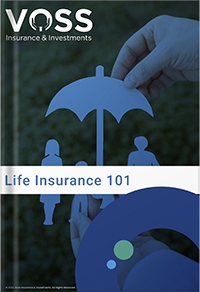Key Executive Insurance
Apr 22, 2022
Key Executive Insurance

Businesses can take advantage of life insurance to provide protection against the risk of losing a key employee, fund a deferred compensation plan or a succession plan, or as part of a split-dollar arrangement. In order for the business to receive the life insurance death benefit federal income tax-free, the business must comply with the notice and consent requirements outlined in Internal Revenue Code (IRC) §101(j).
This requirement for employer-owned life insurance (EOLI) applies to all policies that were issued or materially changed any time after August 17, 2006. Failure to comply with the IRC §101(j) notice and consent requirements can mean that the difference between the death benefit and the premiums paid may be subject to income tax when paid to the business.
This requirement usually applies to life insurance policies issued after August 17, 2006, where a business is the policy owner, that business is directly or indirectly the policy beneficiary, and an employee of that business is the insured. For a life insurance policy subject to IRC §101(j), the death benefit paid is taxable when received. Exceptions to this general rule, however, do exist and it is crucial for business owners and their advisors to understand and comply with any requirements if they want to avoid any income taxation.
Employer Owned Life Insurance Defined
An employer owned life insurance policy is:
A policy owned by a person engaged in a trade or business that insures an employee in the trade or business of the policy owner or a related person on the date the contract is issued wherein that person is directly or indirectly a beneficiary of the policy.
Some examples of typical EOLI policies include key person life insurance, business owned policies to fund a stock redemption plan, and split-dollar arrangements. Policies owned by a qualified plan or voluntary employee benefits association (VEBA) are not considered EOLI, however policies held in a rabbi trust that are considered the grantor employer’s asset may be considered EOLI and policies held in a secular trust that are not treated as owned by the employer for tax purposes may not be considered EOLI under IRC §101(j).
Notice and Consent Requirements
Before any life insurance policy is issued, the notice and consent requirements need to be met . The life insurance application can be submitted, and underwriting started, however the “Notice and Consent” must be signed and dated by the employee before the policy can be issued.
- It is required that the employee be notified in writing by the employer that the employer intends to insure the employee’s life;
- Notification in writing to the employee must include the maximum face amount reasonably expected by the employer, either in dollars or in multiples of salary, for which the employee could be insured at the time the insurance policy is issued.
- Notification in writing to the employee must include that the employer will be a beneficiary of any proceeds payable upon the employee's death;
- Written consent to being insured under the insurance contract must be signed by the employee; and
- Written consent, allowing the coverage to continue following any termination of employment, must be provided by the employee.
Annual Filing Requirements
Employers owning life insurance on their employees must report the following to the IRS annually:
- The total number of employees at the end of the year;
- The number of those employees insured under EOLI contracts at the end of the year;
- The total amount in dollars of insurance in force under those contracts at the end of the year;
- The name, address, and taxpayer identification number of the employer, and the type of business in which the employer is engaged; and
- Verification of valid consent for each employee insured by the employer, or, if all required consents are not obtained, the number of insured employees for whom consent was not obtained.
Valid Consent
In order for the notice and consent to be valid, the life insurance policy needs to be issued before the expiration of the one-year period starting on the date the consent was executed, or termination of the employee’s employment with the employer.
Multiple EOLI Contracts on One Employee
A single consent can apply to more than one EOLI contract as long as IRC §101(j)(4)requirements are met.
Irrevocable Transfer of an Existing Policy from Employee to Employer
Unless the employer later increases the face amount of the contract, notice and consent is unnecessary if an employee irrevocably transfers an existing life insurance contract to an employer.
Electronic Notice and Consent
Notice and consent can be done electronically if the employer’s system:
- Ensures that the information received by the employee is identical to what was sent by the employer.
- Is reasonably certain that the person accessing the system is the employee.
- Includes an electronic signature process or other means to formally record the employee’s consent.
- Allows production of a hardcopy of the electronic notice and consent upon IRS request, and a statement that the employee was notified and consented to being insured to the best of the employer’s knowledge.
Entity Structure
- A wholly owned corporation and its employer-owner must comply with written notice and consent requirements.
- A life insurance policy owned by a sole proprietor on their own life is not an EOLI contract.
- Guidance is not clear regarding treatment of an employee-owner of a single member limited liability company; therefore, compliance is prudent.
Executive Bonus Arrangement
An executive bonus arrangement is a benefit arrangement where the employer pays bonus compensation in the form of premium payments on the employee’s personally owned life insurance policy. This is also known as a “Section 162 Bonus Plan”.
An executive bonus arrangement is most easily described as employer-funded personal life insurance.
Employers use executive bonus arrangements to encourage employees to stay with the company. The two basic types of executive bonus arrangements are:
- Single Bonus – Employer provides a cash bonus to the employee so the employee may purchase a life insurance policy. The employee is responsible for paying the tax due on the bonus.
- Double Bonus - Employer provides a cash bonus to the employee to allow the employee to purchase a life insurance policy and provides an additional bonus to cover the tax due on the bonus amount. In each case, the employee has full ownership rights of the policy which includes naming the beneficiary and accessing the policy cash values.
Implementing an Executive Bonus Arrangement
The employer’s board of directors should adopt a corporate resolution that establishes the purpose for the bonus. For example, to help recruit, retain, and reward key employees, authorize the company to offer the benefit to key employees, and provide the financial details of the agreement. While not required, it is advised to have an attorney formally document the agreement and clearly define the terms of the bonus arrangement between the employer and the key employee.
The employee applies for and owns a permanent life insurance policy on their life. As the owner of the policy, the employee has the right to name the beneficiary of the policy’s death benefit. The beneficiary of the life insurance policy should not be the employer; otherwise, the bonus would not be income tax deductible to the employer. The employer can pay the premiums on the life insurance policy directly to the life insurance company or award the premiums to the employee who in turn writes the check to the insurance company. When the employee retires, they can access the policy cash values through withdrawals and loans to supply a tax-free income stream over a period of time.
The employee could also choose to keep the policy intact to provide valuable survivor protection for their family. However it should be noted that policy loans and withdrawals will decrease the cash surrender value and death benefit. Loans also accrue interest on the amount outstanding.
Restricted Executive Bonus Arrangement
A restrictive endorsement can be incorporated into the agreement that requires the company’s consent for the employee to access the policy cash values, surrender the policy, assign or pledge the policy as collateral for a loan, or change the ownership of the policy until a specified time. This can be used to create “golden handcuffs,” providing the employee with additional incentive to remain with the company.

Executive Bonus Tax Considerations
Income Tax Considerations- Employer
If the employee’s total bonus compensation is considered reasonable, considering the services provided, the compensation bonus is deductible in the year paid by the employer. It is important to document the executive bonus arrangement through a corporate resolution in order to help establish it as a business expense of the company to preserve the tax deduction.
Income Tax Considerations- Employee
The cash bonus or premiums paid by the employer are reported as additional compensation on the employee’s Form W-2 Wage and Tax Statement in the year the bonus is received. At the employee’s death, the life insurance death benefit proceeds are received by the designated beneficiary free of federal income taxes.
Estate Tax
If the employee personally owns the life insurance policy, policy death benefits will be included in their taxable estate at death. If estate taxes are of concern for the employee, they may want to establish an irrevocable trust to own the life insurance policy. However, if the policy is owned by an irrevocable trust, problems with gift taxes will need to be addressed.
Nonqualified Deferred Compensation
A nonqualified deferred compensation plan is an agreement between an employer and an employee to delay the payment and receipt of compensation for services performed currently. The employer makes an unsecured and unfunded promise to pay the amounts specified under the agreement to the key employee at some future date. Nonqualified deferred compensation can be used in both the employer/employee and the employer/independent contractor context.
An employer may consider implementing a nonqualified deferred compensation plan if the employer wishes to:
- Attract, retain and reward key employees who are important to the company’s success.
- Provide an incentive to key employees to remain with the company and motivation to contribute to the company’s success.
- Create “golden handcuffs'' for key employees making it costly for them to leave or become a competitor of the company.
- Provide key employees with supplemental retirement benefits in addition to other retirement plans currently in place.
Nonqualified Deferred Compensation Plan Design
A nonqualified deferred compensation plan allows for flexibility, but generally this plan is structured as a supplemental executive retirement plan, a deferred income plan, or a non qualified 401(k) look-alike plan.
Supplemental Executive Retirement Plan
A supplemental executive retirement plan (SERP) is usually funded through employer contributions only. There are two types of SERPs: defined benefit SERPs and defined contribution SERPs. In a defined benefit SERP, benefits received by the employee are based on a specific formula, such as a percentage of the employee’s income. However, with a defined contribution SERP, benefits received by the employee are based on the accumulated account value on the designated distribution date. Benefits are paid to the employee over a defined period or upon the occurrence of an event as defined in the plan document. Both defined benefit SERPs and defined contribution SERPs can be structured to provide a survivor benefit to the employee’s spouse.
Deferred Income Plan
A deferred income plan (DIP) is funded through employee deferrals only, or structured to combine both employee deferrals with matching employer contributions. Deferred amounts accrue interest at a rate stated in the plan document. Deferred amounts, plus accrued interest are paid to the key employee over a defined period beginning at a specified date or the occurrence of events defined in the plan. If the key employee dies, the designated beneficiary may be entitled to pre-retirement or post-retirement survivor benefits. The key employee is always vested in their deferrals and typically entitled to them upon separation of service, but employer contributions could be subject to a vesting schedule.
401(k) Look-aLike Plan
A 401(k) look-alike plan applies the same “employee saving and employer match strategy” used in a qualified 401(k) plan without the contribution limits. Key employees can defer a portion of their current income and the employer agrees to make matching contributions of the key employee’s deferral, as decided in the plan document. The key employee is fully vested in their deferral amounts, but a vesting schedule can be implemented for employer contributions as a supplemental retention strategy. Benefits are paid to the employee over a defined period or upon the occurrence of an event as defined in the plan document.
Nonqualified Deferred Compensation Plan Funding
A deferred compensation agreement must not be funded for Internal Revenue Code (IRC) and Employee Retirement Income Security Act (ERISA) purposes to avoid current income taxation. An agreement is normally considered unfunded if the employer’s obligation is an unsecured promise to pay. This requires that the assets backing the agreement be available to the claims of general creditors of the employer. The employee is a general creditor of the employer with respect to claims under the agreement. To protect the employee from a “change of heart” by the employer, a rabbi trust can be created. In a rabbi trust, the employer transfers assets to a trust for the benefit of the key employee. While a rabbi trust does not protect the assets from the claims of the employer’s creditors, it provides the key employee the added security that funds have been set aside by the employer and will not be used for any other purpose. For the employer, a rabbi trust has prior and continuous costs associated with it.
Methods of Informal Funding
Various assets can be used to informally fund a nonqualified deferred compensation plan such as savings accounts, bonds, stocks, mutual funds, and annuities. However, these assets are subject to current income taxation and possible market value fluctuation. Also, these assets often provide no cost recovery, no survivor benefit, and no guarantees.
Accordingly, permanent life insurance on the key employee is usually used to informally fund a nonqualified deferred compensation plan. As owner and beneficiary of the life insurance policy the employer may access the policy’s cash to fund the promised benefits to the employee. The cash value of the life insurance policy accumulates on an income tax deferred basis and depending on the product, the cash values may be credited based on a guaranteed crediting rate.
The death benefit can provide both cost recovery to the employer as well as the funds to provide the promised survivor benefits. If the employer decides to purchase insurance on the life of an employee, the employer must follow the “Notice and Consent” requirements under IRC §101(j) to preserve the income tax-free nature of the life insurance policy’s death benefit.

Nonqualified Deferred Compensation Taxation
Income Tax Considerations – Employer
The employer receives an income tax deduction when the benefit is paid to the key employee as long as the benefit, when taken into consideration with all other compensation paid to said employee, is reasonable considering the services provided.
Income Tax Considerations – Employee
As long as employer deferrals are subject to a substantial risk of forfeiture and the employee is not in “constructive receipt” of deferred amounts and does not possess any economic benefit, there should be no income tax consequence to the employee upon deferral. To avoid constructive receipt on amounts deferred by the employee, the agreement must be entered into before compensation is earned or services are performed.
Where life insurance will be used to informally fund a deferred compensation agreement, to make sure the employee has no economic benefit, they should have no beneficial interest in the policy, including the right to name the beneficiary for any part of the death benefit proceeds.
The employer should be sole applicant, owner, beneficiary and premium payer of any policy used. If properly structured, an employee will not include any deferred compensation in taxable income until it is received. Once received, the entire amount received will be included in taxable income for that year.
Similarly, any amount received by the employee’s beneficiary after death will be treated as income in respect of a decedent and will be taxable to the beneficiary in the year received. The beneficiary will be entitled to an income tax deduction for any estate tax paid resulting from the benefits being included in the decedent’s estate. In addition to normal income tax, a 20% penalty tax is imposed with an interest rate at 1% higher than the effective underpayment rate.
Other Blogs
Golden Handcuff Insurance
A Deferred Income Plan (DIP) is a nonqualified deferred compensation plan between an employer and a key employee that provides extra retirement income to the employee.
Read MoreSplit Dollar Funding
A split dollar insurance arrangement divides premiums, ownership interests, and benefits of a permanent life insurance policy between two parties. It can be used to fund a life...
Read MoreRequest a Consultation
Enter some basic info below to start the quote process.
OR

Contact Us Now
Are you interested in knowing more about our services? Book a call with one of our friendly teams.
(214) 396-7398



